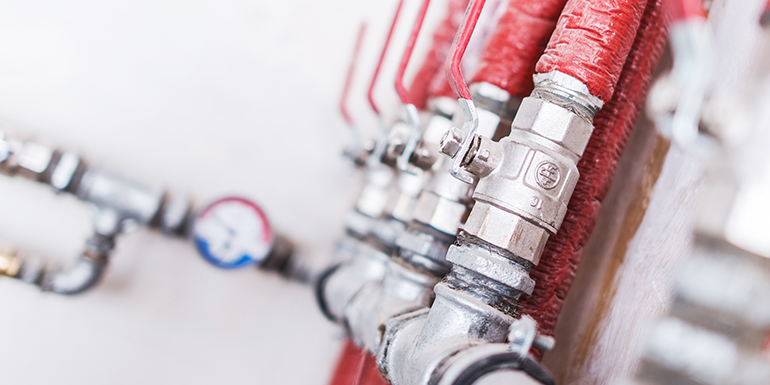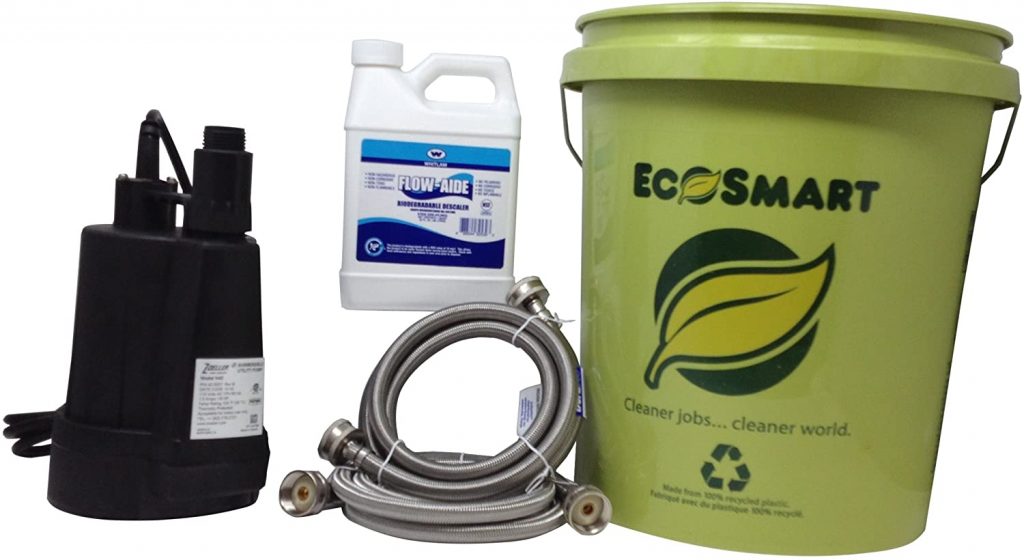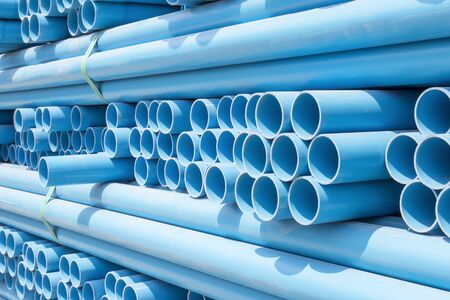How To Clean Sediment From Water Lines? [6 Productive Ways]
We all know how crucial it is to clean and maintain our water heaters and other appliances.
However, some homeowners are ignorant that flushing a water heating unit annually can eliminate sediment accumulation from the water lines.
Flushing sediment can increase the unit’s lifespan and competence.
Sediment enhances the hazard of congestion, makes the water smelly and musty, and reduces the water temperature.
Luckily, this is not one of those problems that you need to tolerate.
Despite what some folks believe, it is viable to get rid of sediment from the tank’s bottom and water lines and improve your plumbing state in a flash.
If the sediment accumulation is terrible, you may need to hire expert service; otherwise, you can do it yourself.
This article will educate you about what causes sediment and how to remove sediment from water lines. So keep reading.
What Are The Reasons For Sediment Formation In Water Lines?

Rust
Iron pipes are the biggest reason for sediment formation in the pipes.
Due to iron, corrosion and rust can easily build up when treated with water.
Because of atomic rusts’ heavyweight, most of them gather at the pipe’s bottom.
If your water is turning orange or brown color, it indicates corrosion in the tank.
Replace the pipes as soon as possible to remove rust.
Annually inspect your pipes and boilers to detect early signs of rust.
Contaminated Water
Contaminated water is also one of the most significant causes of sediment formation in the water lines.
If the pipes are of metal and the surface is not smooth, sediment will stick to the pipes’ surface. It will lead to quick sediment accumulation.
Limescale
If you have hard water, you will experience this problem.
If you observe limescale deposits formed around the tap or plumbing fixture, it is a clue that something serious is hidden inside the pipes.
Descale your heater frequently to eliminate sediment and avoid having your pipes blocked with calcium.
If the situation is serious, install a filtration system or water softener.
Debris
Tiny elements entering into your device can also be the cause of sediment buildup in your pipes.
When this occurs, your container probably does not have a lid or the lid is not fixed properly. It permits small particles to get in.
If the lid is broken or doesn’t offer protection to prevent external elements from entering the tank, make sure to take appropriate action.
Regular inspection of boiler aids you in discovering any such issues early on.
4 Obvious Signs You Have Sediment In Your Water Lines
If you are noticing these signs, you must take immediate action.
Slugging Plumbing
If your bathtub takes a longer time to drain and fill, you could have sediment formation.
Before contacting a plumber to inspect the drains, clear the water lines to remove sediment.
Discolored Water
If your water was clear previously, but it has turned yellow or brown now, be sure that you have sediment accumulation.
Sometimes, the issue is associated with a malfunctioned tank or a sewage leak.
Nonetheless, if it is a matter of sediment buildup, it is wise to clear the water lines first.
Low Water Pressure
If the water pressure is extremely low, excess sediment might be the culprit.
Bad-Tasting Water
If the taste of your water is “off,” you can blame sediment.
Some sediment types can leave the water taste and smell awful.
If your water smells like rotten eggs, the chances are that you have sulfur sediment accumulation on your water lines.
How To Find The Root Cause Of The Sediment Buildup?
Finding the root cause of the issue is imperative before learning how to clean sediment out of water lines.
Corrosion can easily form in different parts of the plumbing system inside your residence or from the main source.
However, it can be different to fix the problem for both the sources.
Therefore, it is vital to understand the source rather than applying solutions to resolve the problem.
The ideal approach to figure out the sediment accumulation is to open up a tap or fixture near the main source.
Leave it open for at least 3 minutes, put a white tub beneath it, and then look for the rusts.
If it has rust, sediment formation maybe is in the main source.
Nevertheless, if the water is clear, the plumbing system is rusted.
How To Clean Sediment From Water Lines?
Flush Hot Water Pipes With Cold Water

One of the best tactics to remove sediment from the water lines is to run cold water through them.
First, shut off the water system and heater to guarantee your safety.
Then, insert the water hose in the unit’s drain and put the force’s end on the floor drain.
The hot and cold water valves must be turned off.
Actually, the cold water valve carries the cold water to the device where it is warmed.
If you skip this step, the cold water will continue to move in and out of the machine.
This will interrupt the process and lead to a hefty water bill.
Once you complete the process, activate the faucet to inhibit a vacuum from making in your pipes.
Next, activate the heater’s drain valve to eliminate the sediments.
The water should rapidly flow through the pipes for as long as possible to remove the last inch of the sediment layer.
Before starting the “how to flush sediment out of water lines” process, check the water is traveling from the pipe down the drain.
If not, the whole procedure is of no use. Once it is finished, remove the water hose, turn the water system and heater back on.
You can check out our detailed guide on best flush kits review for your tankless water heater
Flush Other Pipes
The last step was for flushing the hot water pipes, but there are other pipes in your apartment as well that can have sediment accumulation.
Cleaning them is easier, and all you have to do is activate 3 to 4 taps and allow the water to flow through them for 20 minutes.
The water pressure should be maximum during this procedure to ensure that all the sediments are removed from the pipes.
If some sediments are left, repeat the same process after half an hour.
If you want to finish it quickly, turn the garden hose on simultaneously at high speed.
Clean The Aerators
Clean the aerator on your faucet. Sediments can easily build up in there, so it is necessary to remove them.
To do this, cover the drain in the sink with a towel. Then, unscrew the faucet’s tip with a wrench.
Wrap a small washcloth around the fixture to unscrew it easily if you cannot do it with your hands.
Remove all the parts of the aerator and keep in mind how to fix them back.
Wash the removed parts with water and put them back, and screw back the aerator.
Repeat this procedure with all your fixtures.
Change The Pipes

If you have rusts in your pipes, you cannot eradicate them with water pressure.
Therefore, you will have to replace the rusty pipes.
First, turn on all the cold water taps in your residence that are near the main source.
If there is no rust, the lightweight sediments will be flushed out. Leave the taps open until the container is empty.
Once it is empty, turn off the taps to prevent air pressure.
Now, buy new PVC pipes to swap with the rusty ones. They don’t leak and form rust.
Use Chemicals
You can also use chemicals such as muriatic acid to get rid of sediments from the water lines.
Mix the chemical with 1 cup of water and put it into the blocked drain.
Leave it for 15 minutes, and then activate the tap.
The powerful chemicals will break the rust and slacked it up to flush out.
Use Vinegar And Baking Soda
If you don’t want to spend a lot of money on how to clean sediment from pipes, you should use vinegar and baking soda.
You will need 1 cup of baking soda and at least 15 liters of vinegar to flush out sediment from one pipe.
First, pour baking soda into all pipes and then pour vinegar after mixing it with some water.
Keep this solution in the plumbing system for 24 hours.
These ingredients will break up the corrosion inside the plumbing system.
After one day, keep the water flowing and check until you acquire fresh and odorless water.
Conclusion
If you don’t have a budget and want to know how to clean sediment from water lines, our detailed guide will certainly help you.
The methods mentioned here are exclusively picked so that you can perform them yourself and save money.
Sediment buildup is a prevalent issue in households, but you should not overlook it.
Drinking polluted water can be hazardous for your health. Also, sediment lowers your heater’s lifespan and efficiency.

![How To Turn On Water Heater? [Gas, Electric, Tankless Water Heaters – Complete Guide 2021]](https://waterheateradvisors.com/wp-content/uploads/2021/06/How-To-Turn-On-Water-Heater-768x300.jpg)




